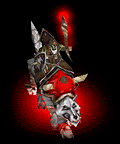Instructions for use
To whom is this tutorial directed?
This tutorial is for those people who want to learn programming in C++ and do not necessarily have any previous knowledge of other programming languages. Of course any knowledge of other programming languages or any general computer skill can be useful to better understand this tutorial, although it is not essential.
It is also suitable for those who need a little update on the new features the language has acquired from the latests standards.
If you are familiar with the C language, you can take the first 3 parts of this tutorial as a review of concepts, since they mainly explain the C part of C++. There are slight differences in the C++ syntax for some C features, so I recommend you its reading anyway.
The 4th part describes object-oriented programming.
The 5th part mostly describes the new features introduced by ANSI-C++ standard.
Structure of this tutorial
The tutorial is divided in 6 parts and each part is divided in its turn into different sections covering a topic each one. You can access any section directly from the section index available on the left side bar, or begin the tutorial from any point and follow the links at the bottom of each section.
Many sections include examples that describe the use of the newly acquired knowledge in the chapter. It is recommended to read these examples and to be able to understand each of the code lines that constitute it before passing to the next chapter.
A good way to gain experience with a programming language is by modifying and adding new functionalities on your own to the example programs that you fully understand. Don't be scared to modify the examples provided with this tutorial, that's the way to learn!
Compatibility Notes
The ANSI-C++ standard acceptation as an international standard is relatively recent. It was first published in November 1997, and revised in 2003. Nevertheless, the C++ language exists from a long time before (1980s). Therefore there are many compilers which do not support all the new capabilities included in ANSI-C++, specially those released prior to the publication of the standard.
This tutorial is thought to be followed with modern compilers that support -at least on some degree- ANSI-C++ specifications. I encourage you to get one if yours is not adapted. There are many options, both commercial and free.
Compilers
The examples included in this tutorial are all console programs. That means they use text to communicate with the user and to show their results.
All C++ compilers support the compilation of console programs. Check the user's manual of your compiler for more info on how to compile them.
 

|
